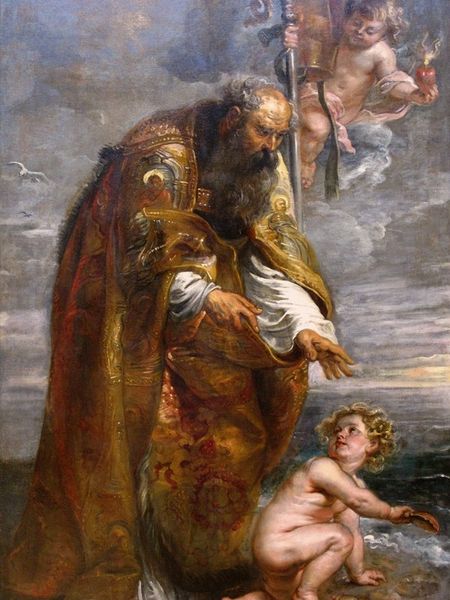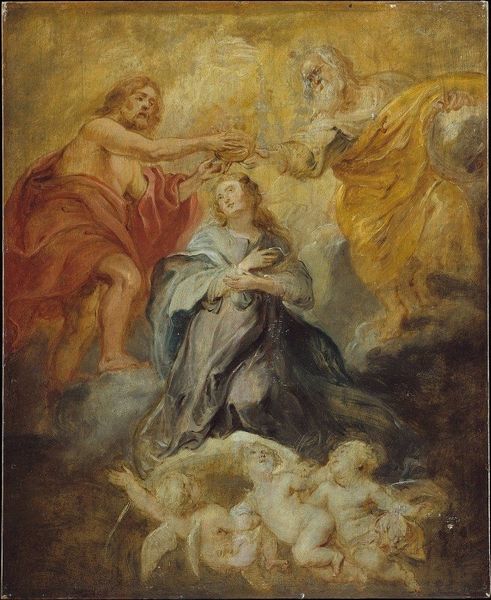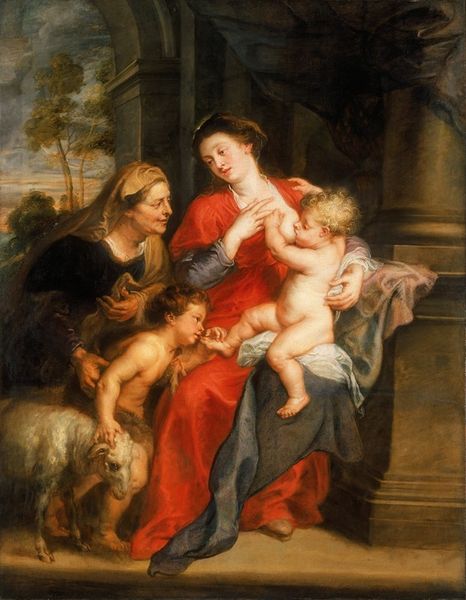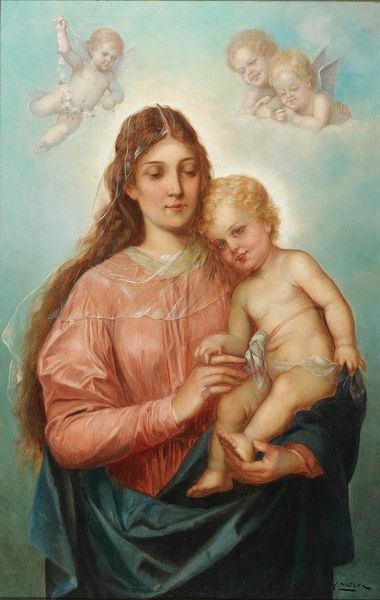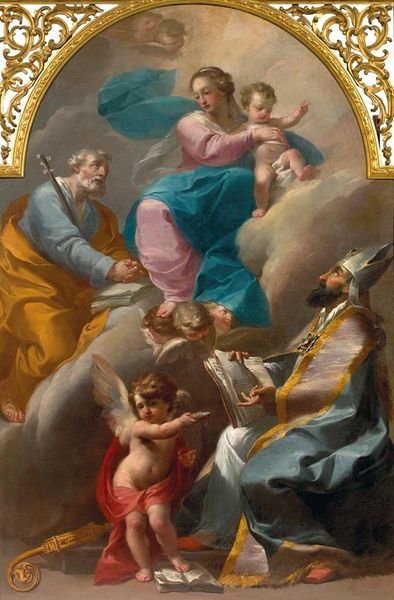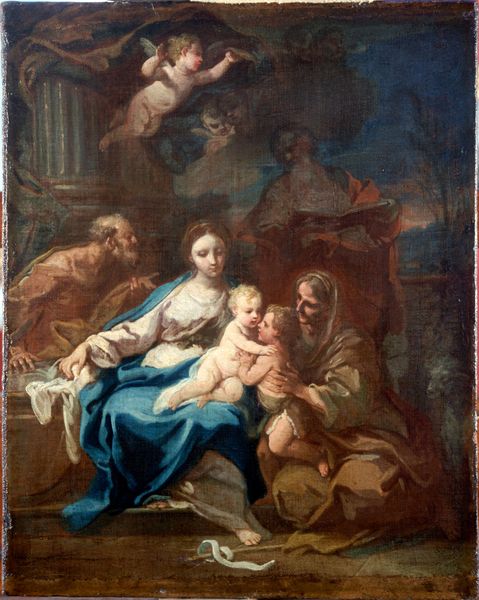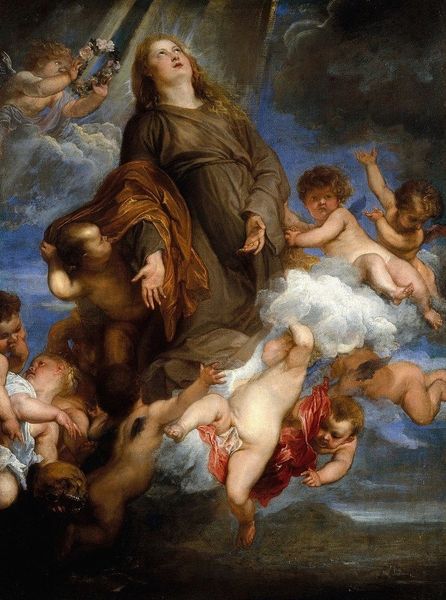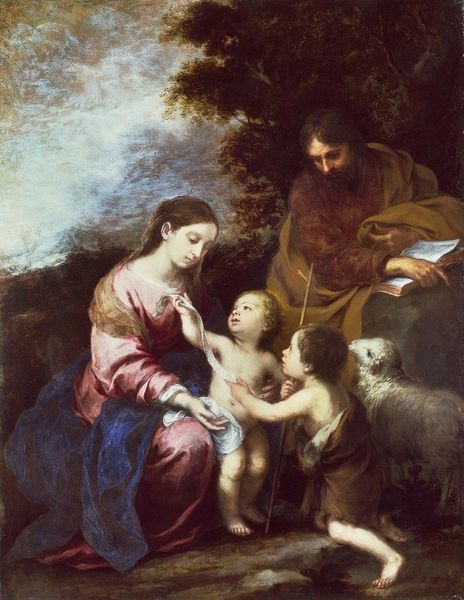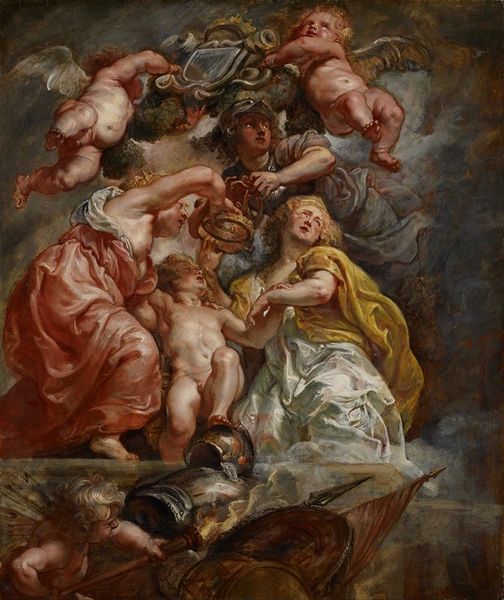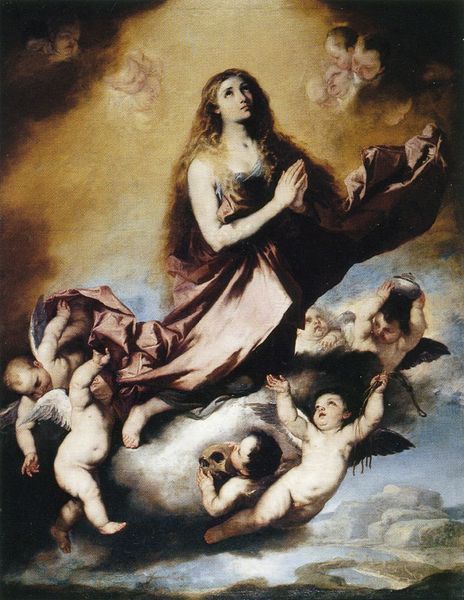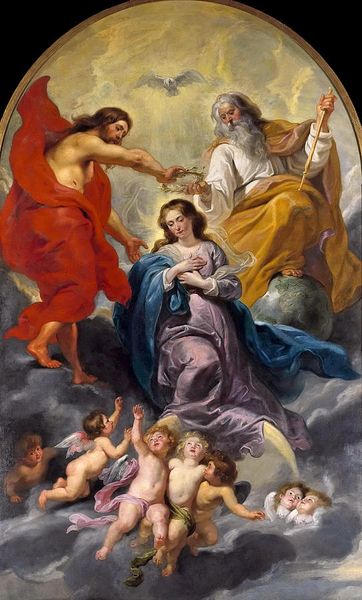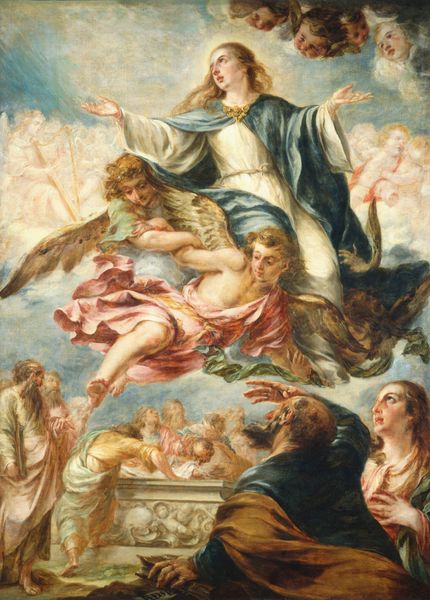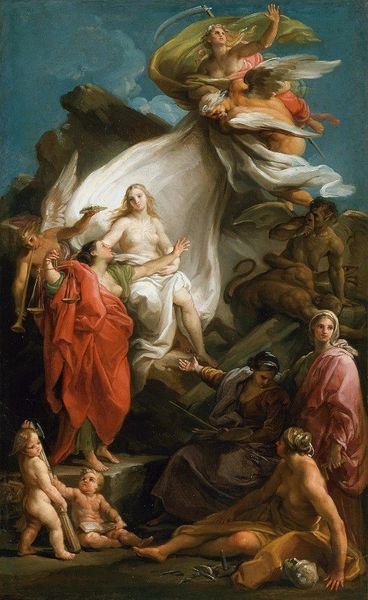
painting, oil-paint, fresco
#
portrait
#
allegory
#
baroque
#
painting
#
oil-paint
#
figuration
#
fresco
#
oil painting
#
group-portraits
#
mythology
#
history-painting
Copyright: Public Domain: Artvee
Peter Paul Rubens created this oil on canvas painting, Allegory of Eternity, the Succession of the Popes, sometime between 1600 and 1640. Looking at the painting, notice the physical qualities of oil paint itself. It gives a rich, luminous surface. The work of art involved a complex layering process. Rubens would have mixed powdered pigments with linseed oil and other additives. The inherent qualities of these materials allow for the creation of intense colors. The artist applied these layers carefully, letting them partially dry in-between, to build up the image. The canvas support also plays a role. Its weave creates a subtle texture visible beneath the paint layers. The scale of the painting meant the canvas was stretched over a wooden frame, giving it rigidity. These techniques represent skills developed over generations of European painting. Focusing on materials and making helps us appreciate that this painting isn't just an image, but the product of skilled labor, cultural traditions, and specific material choices. The artist was clearly drawing on well-honed studio practices, acquired from other artists.
Comments
No comments
Be the first to comment and join the conversation on the ultimate creative platform.
